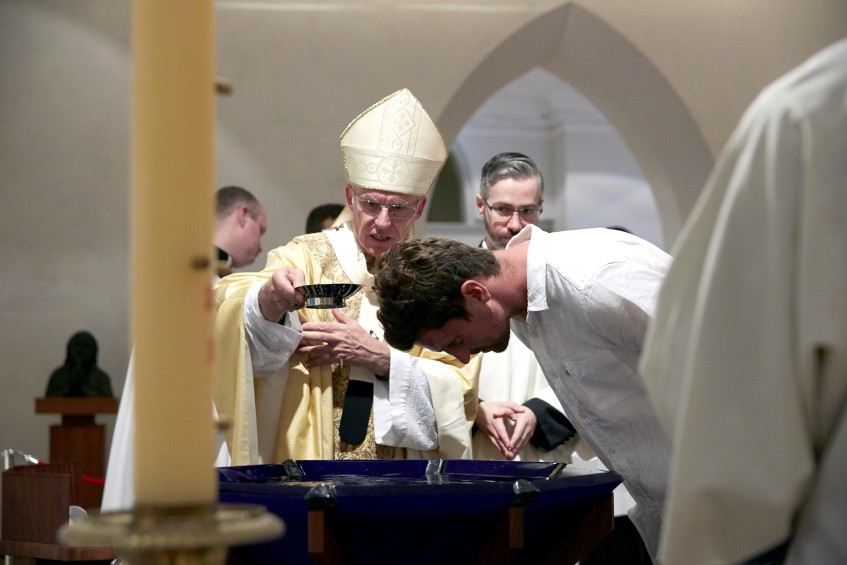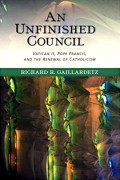PLENARY 2020: Realising the dream of Vatican II

The most fundamental Christian calling is Baptism, and all the baptised share in Christ’s prophetic, priestly and kingly offices. Photo: Ron Tan.
As the fifth part of The Record’s campaign about the 2020 Plenary Council, Facilitation team member Fr Noel Connolly speaks about the dream of Vatican II.
Earlier this year, I read an excellent book, An Unfinished Council: Vatican II, Pope Francis and the Renewal of Catholicism, by Richard Gaillardetz.
In it, he compares the pillars of the pre-Vatican II Church with the new pillars of a Vatican II Church.
There is not space enough here to discuss them all, so let me concentrate on the three more important changes relevant to our Plenary Council.
Before the Council, faith was understood primarily as believing in doctrine – a number of propositions or truths that the hierarchy taught to the laity, who obediently believed without contributing anything.
At Vatican II, the bishops returned to the traditional understanding of faith. God reveals himself to us, inviting us into a personal relationship.
Through faith we come to know not things about God, but God’s own self – in a personal, relational way.
Since all Christians personally know God, all have the sense of the faith that Pope Francis keeps reminding us of. All can contribute to the teaching role of the Church.
Certainly, the official teachers need to listen to the sense of the faithful before teaching. This understanding of a shared sense of the faith also leads to one of the strongest themes of Vatican II: dialogue.
Following on from Vatican I, the Church became more papal-centred.
This was something the bishops at the Second Vatican Council wanted to balance.
The bishops fought strongly for a say, especially about matters the Curia was deciding without reference to them. They wanted a collegial Church.
Collegiality was accepted in principle at the Council, but has waxed and waned since. It is still developing and maturing in practice. Witness the changes Pope Francis is making to the understanding and practice of the Synod of Bishops, all in the interest of making them more collegial, and not just consultative.
Collegiality, strictly speaking, refers to bishops, “with and under Peter”. But it is informed by “synodality”, which includes the whole people of God, all of us journeying together, serving each other and listening to one another and in that way to the Holy Spirit.
A final pillar of the pre-Vatican II Church was an emphasis on a sacral priesthood.
Clerics were seen as special, separate from the rest of the people of God, superior in holiness and knowledge, the sole and indispensable channels of God’s grace, gifts and leadership.
At Vatican II, the priority is given to Baptism, not Holy Orders. The most fundamental Christian calling is Baptism, and all the baptised share in Christ’s prophetic, priestly and kingly offices. (Lumen Gentium, 10-13).
To highlight this, Pope Francis recently said: “This tells us that no one in the Church is useless… we are all necessary for building the Temple. No one is secondary. No one is the most important person in the Church, we are all equal in God’s eyes.”
To reinforce this, the bishops at Vatican II deliberately changed the order of chapters in their Constitution on the Church, Lumen Gentium. Instead of beginning “from the top”, with the hierarchy, they began with a chapter on “the People of God”.
That is what unites us. We – Pope, bishops, priests and laity – are all members of the people of God. In a people of God theology, the “ontological gap” between clergy and laity dissolves. Our unity comes from our sense of being the people of God on mission. Such a vision can nourish among us great enthusiasm and hope, energy and equality. We are collaborating in something much larger than ourselves: God’s life and mission in the world.
In the past year, since being appointed to the Plenary Council Facilitation Team, I returned to studying the history and theology of Vatican II. I am frequently surprised at the treasures it contains which we have yet to mine and develop.
Through our Plenary Council, we may make the dreams of Vatican II more real in Australia.

An Unfinished Council: Vatican II, Pope Francis and the Renewal of Catholicism, by Richard Gaillardetz. Image: Sourced.
